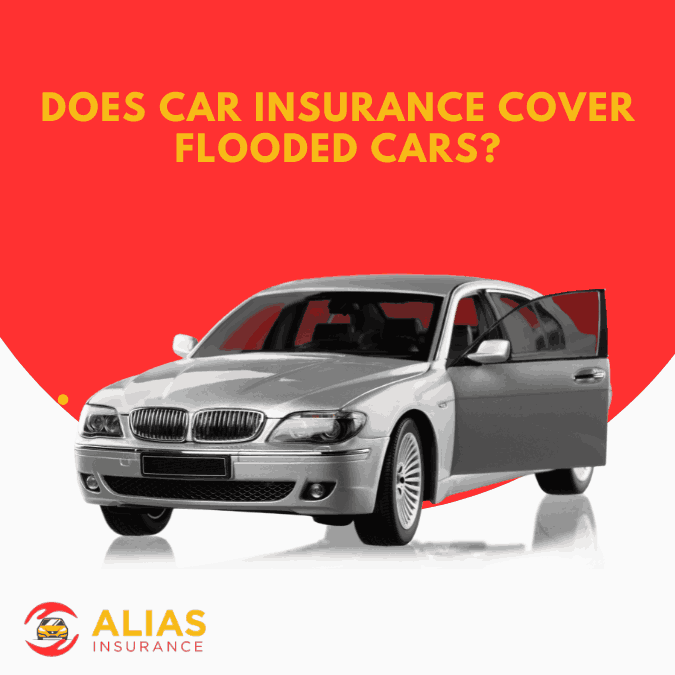
Yes, car insurance covers flooded cars, but only if you have comprehensive coverage. Liability and collision insurance do not protect against flood damage. Comprehensive coverage pays for repairs or replacement if your car is damaged or destroyed by floods, storms, hurricanes, or heavy rain. If your vehicle is declared a total loss, your insurer will usually pay its actual cash value, minus your deductible.
Floods are one of the most common and costly natural disasters in the United States. The National Flood Insurance Program reports that flooding causes billions of dollars in property damage each year. When water levels rise, cars are often the first to suffer. In fact, experts estimate that nearly 200,000 vehicles are damaged by floods every year, especially in states like Florida, Texas, and Louisiana.
Which Car Insurance Policies Cover Flood Damage?
1. Comprehensive Coverage
- Protects your car against non-collision events.
- Covers floods, hurricanes, tornadoes, hail, theft, vandalism, and fire.
- Pays for repair or replacement based on actual cash value (ACV).
- Requires you to pay a deductible, usually $500 to $1,000.
Example: If your car’s repair cost is $5,000 and you have a $1,000 deductible, the insurer pays $4,000.
2. Liability Coverage
- Covers injuries and damages you cause to others in an accident.
- Does not cover your car if it is damaged by a flood.
3. Collision Coverage
- Pays for damages if your car hits another vehicle or object.
- Does not apply to water damage caused by storms or floods.
👉 Bottom line: Without comprehensive coverage, you’ll be paying flood repair costs entirely out of pocket.
How Flooding Damages Cars
Flood damage is often more severe than it looks on the surface. Even if a car seems fine, hidden electrical and mechanical problems can appear months later.
Types of flood damage include:
- Engine damage: If water enters the cylinders, the engine can seize.
- Electrical failure: Wiring, fuses, and computer systems short out.
- Transmission issues: Floodwater contaminates transmission fluid.
- Interior damage: Carpets, seats, and insulation grow mold and mildew.
- Rust and corrosion: Brakes, axles, and undercarriage components weaken.
- Airbag malfunction: Moisture damages safety sensors.
Because modern cars rely heavily on electronics, even shallow flooding can make a car unsafe or unusable.
How Much Will Insurance Pay for a Flooded Car?
The payout depends on whether your car is repairable or declared a total loss.
| Situation | Insurance Response | Example Payout |
| Minor water damage (carpets, upholstery) | Repair costs covered under comprehensive | $2,500 repair – $500 deductible = $2,000 payout |
| Engine and electrical system destroyed | Total loss declared, insurer pays ACV | Car value $15,000 – $1,000 deductible = $14,000 payout |
| Liability-only policy | No coverage | $0 payout; owner pays all repairs |
Key takeaway: Insurance will never pay more than the car’s actual cash value, even if repair costs are higher.
What To Do If Your Car Gets Flooded
- Do not start the engine – turning the key can force water deeper and cause permanent engine failure.
- Document the damage – take photos of water levels inside and outside the car.
- Contact your insurer immediately – the sooner you report, the faster your claim moves.
- Tow your vehicle to a safe location – avoid further water exposure.
- Collect supporting documents – receipts, estimates, service history.
- Meet with the adjuster – they will inspect and decide if the car is repairable or a total loss.
How To File a Flood Damage Claim
- Step 1: Notify your insurer. Provide claim number, date, and details.
- Step 2: Gather evidence. Photos, videos, receipts, and repair estimates.
- Step 3: Adjuster inspection. They evaluate the extent of damage.
- Step 4: Settlement decision. Repair or total loss value is calculated.
- Step 5: Payment issued. You receive a check minus your deductible.
Tip: If your car is financed or leased, the payout goes to the lender first.
When Flood Damage Is Not Covered
Even with comprehensive coverage, there are situations where insurance may deny a claim:
- You only carry liability or collision insurance.
- The damage was due to poor maintenance (e.g., faulty seals, leaking sunroof).
- Fraud (intentionally leaving the car in a flood zone).
- Commercial vehicles not included under your personal policy.
- Late reporting or missing documents.
Preventing Flood Damage
You can reduce the risk of losing your car to floods by:
- Parking on high ground during heavy rain.
- Using covered or elevated parking garages.
- Avoiding flooded streets while driving.
- Installing water barriers in flood-prone garages.
- Reviewing insurance coverage before storm season.
Cost of Adding Comprehensive Coverage
Comprehensive coverage is surprisingly affordable.
- Average annual cost: $134 per year (Insurance Information Institute).
- Average flood claim: $8,000 to $12,000.
- States with highest flood claims: Florida, Texas, Louisiana, North Carolina.
For less than $15 per month, you can protect your car against thousands in potential losses.
Real-Life Examples
- Hurricane Harvey (2017): Over 250,000 vehicles in Texas were destroyed by flooding. Most without comprehensive coverage had to junk their cars for a fraction of their value.
- Hurricane Katrina (2005): Floodwaters totaled nearly 300,000 cars, costing insurers billions.
- Midwest floods (2019): Thousands of cars were ruined in Nebraska and Iowa, leaving uninsured drivers with worthless vehicles.
These events highlight why comprehensive insurance is critical.
FAQs
Yes, if you have comprehensive coverage. It doesn’t matter whether the car was moving or parked.
Yes, comprehensive coverage includes engine damage caused by flooding.
Not always. Minor interior damage may be repaired, but water inside the engine or electronics usually leads to a total loss.
No. It is part of comprehensive insurance. You cannot buy it as a stand-alone policy.
Usually 2–6 weeks, depending on inspection schedules and repair shop availability.
You pay all repair or replacement costs yourself.
Yes, if you have rental reimbursement coverage as an add-on.
